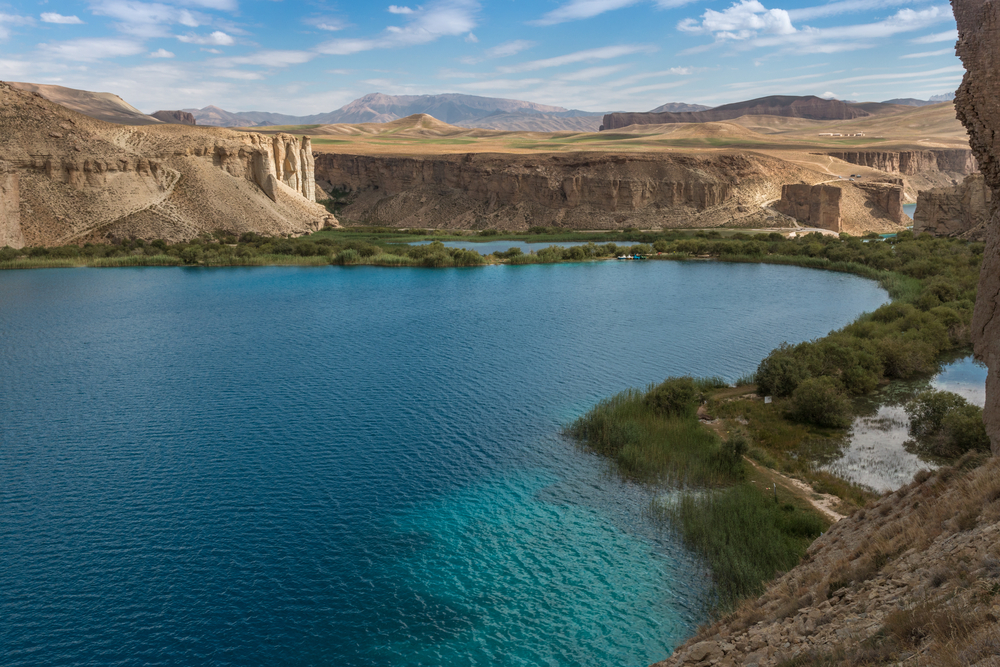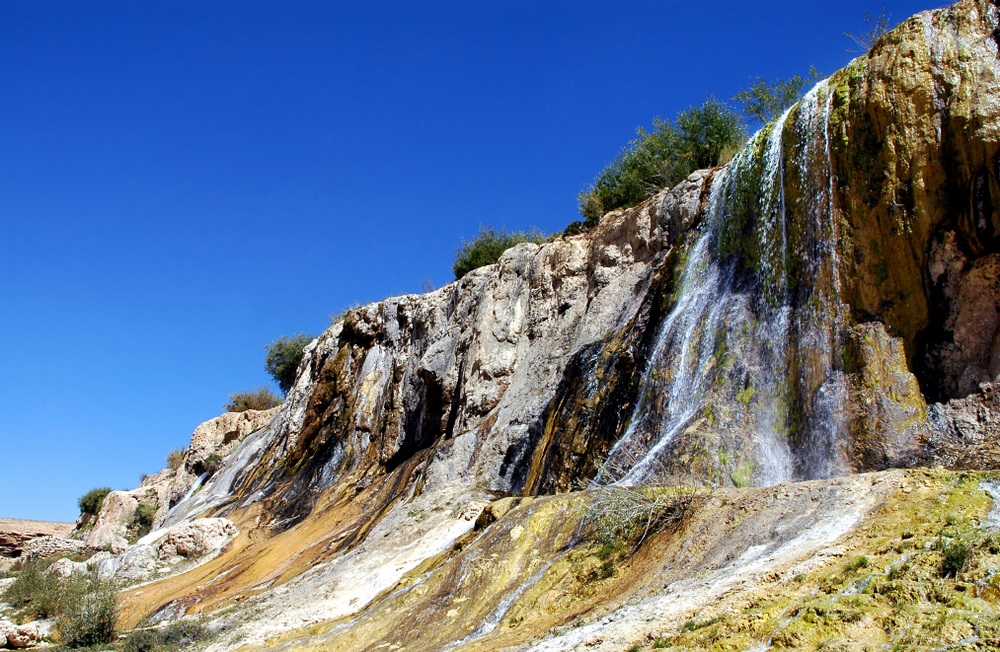Band-e Amir Overview
Band-e Amir National Park (locally known as بند امیر ملی پارک) is Afghanistan’s first national park, located in the central highlands of the country within Bamyan Province. Covering approximately 230 square miles (600 square kilometers), the park is known for its breathtaking series of deep blue lakes, which are set against the dramatic backdrop of the Hindu Kush mountains. These six lakes—formed by natural travertine dams—are the park’s main attraction, and their stunning blue color is the result of high mineral content in the water, particularly limestone.
The landscape of Band-e Amir is a combination of rugged, barren mountains and lush valleys. The high elevation, around 9,800 feet (3,000 meters) above sea level, creates a cool climate with seasonal snow, making the region one of Afghanistan’s most scenic areas. The park is dotted with natural rock formations, and the surrounding cliffs provide sweeping views of the lakes below. The contrast between the arid landscape and the vibrant blue lakes creates a unique and captivating environment.
Vegetation in Band-e Amir National Park is sparse due to the park’s high altitude and arid climate, but some areas support hardy grasses, shrubs, and alpine flowers during the warmer months. The valleys surrounding the lakes are greener, with patches of agriculture and grazing lands used by local communities.
Wildlife in Band-e Amir National Park includes a variety of species adapted to the harsh, mountainous environment. Visitors may spot ibex, wild sheep (urial), and even the endangered snow leopard. Bird species such as golden eagles and migratory waterfowl are also common in the park, particularly near the lakes.
Band-e Amir National Park offers a serene, otherworldly beauty, attracting eco-tourists and locals alike to experience its stunning natural features and peaceful environment.
Park Map
Band-e Amir National Park Highlights
Engaging Band-e Amir National Park
Related National Parks More Afghanistan
Sources
- All Trails, Best Trails in Band-e Amir, https://www.alltrails.com/ar/parks/afghanistan/bamyan/band-e-amir-national-park, retrieved August 2024.
- Red Planet Travel, Band-e Amir National Park, https://redplanet.travel/hub/Band-e-Amir-National-Park-Afghanistan, retrieved August 2024.
- UNESCO, Band-e Amir National Park, https://whc.unesco.org/en/tentativelists/1946/, retrieved August 2024.
- Visit Banyam, Band-e Amir National Park, https://visit-bamyan.com/band-e-amir-national-park/, retrieved August 2024.
- Wikipedia, Band-e Amir National Park, https://en.wikipedia.org/wiki/Band-e_Amir_National_Park, retrieved August 2024.























































































